The Snapshot
The cost of a Hilux has increased since the 1970s. Pricing of wheat and barley haven’t kept the same pace.
In the 1980s you had to sell 87 tonnes of wheat or 125t of barley to purchase a Hilux.
In the 2010s you had to sell 204t of wheat, 100t of canola or 215t of barley.
The amount of canola hasn’t really changed much from 92t in the 1990s.
Productivity, to an extent, has kept up
The Detail
One of the questions we have regularly had over the years:
“How many tonnes of X do I need to sell to buy a Hilux/Landcruiser/Commodore compared to the old days?”
It’s been one that we have always wanted to look at but never got to it.
So, let’s look into how much grain you need to sell to buy one Hilux. We chose the Hilux as it is a good quality farm ute which has been sold for a long time in Australia and will continue being so. Sorry Commodore fans.
How many tonnes to buy a Hilux?
We gathered the price per year of a suitable Hilux from each year since 1979 to the present day, along with the annual average price for wheat, barley and canola.
Grains have generally not kept pace with inflation, but everything else around us tends to increase in price. The Hilux is no exception (even before the COVID tax).
If you were selling wheat or barley to purchase a Hilux in the 1980s you’d have a new Hilux after selling 87t of wheat, and 99t of barley. In the 2010s you’d need to sell 197t and 215t!
The story isn’t quite the same with canola; the average decade range has been 91-100t required to buy a Hilux.
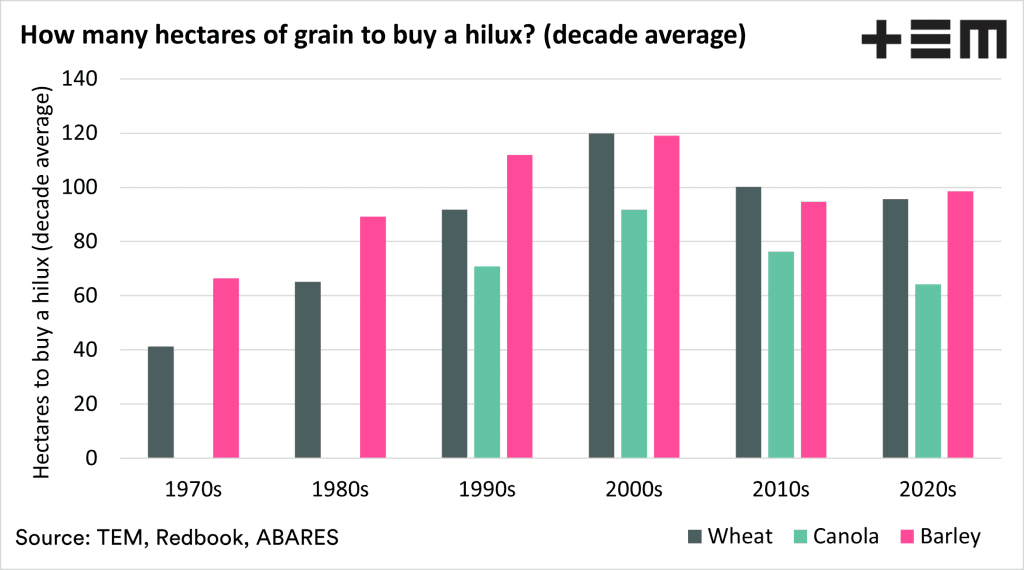
The chart above displayed the decade average, but the chart below shows the annual average prices. As we can see, the canola and Hilux pricing has increased at a much greater pace than that of wheat or barley.
Remember, the pricing in these charts is nominal, meaning they are the prices on the day and do not consider inflation.
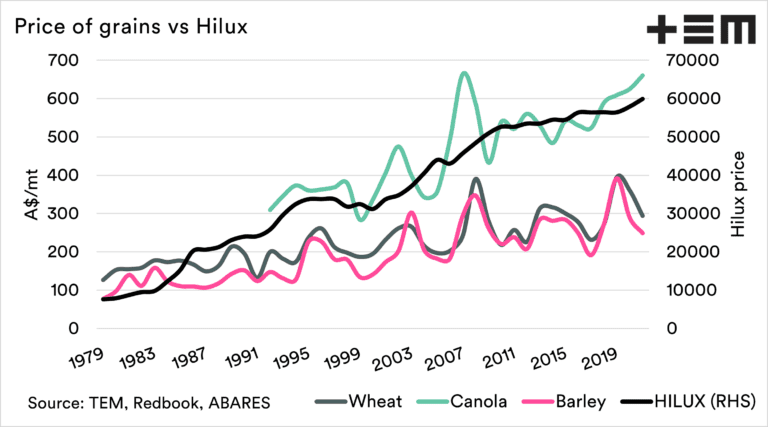
One of the reasons that the pricing of wheat and barley have only had ground slowly higher over the decades is a result of productivity. As an analyst, it’s our job to look into the fundamental questions and delve in a little further. So what is the number of hectares required to purchase a Hilux?
So we gather the annual average Australian yield for each commodity and then calculated how many hectares would be required to purchase a Hilux.
This changes the story quite a bit. It was the best time to buy a Hilux in the early decades, but the range since the 1990s hasn’t been that large in terms of the number of hectares needing harvesting.
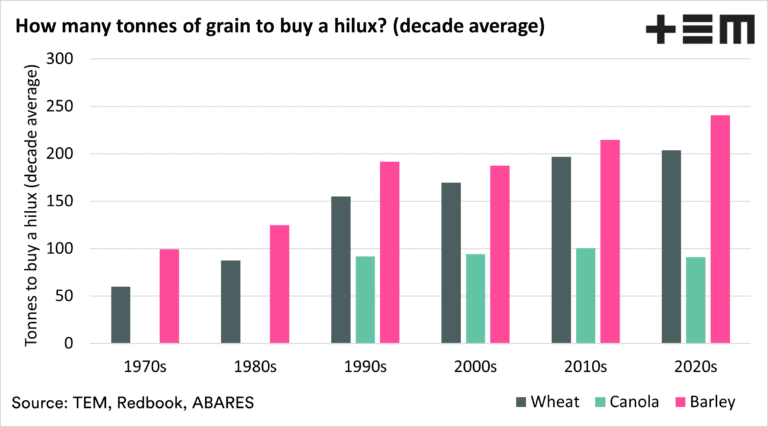
What does this analysis tell us?
Firstly, that my colleague, Matt Dalgleish, and I need a better hobby and/or a social life. In reality, though, it does show the effect (or lack of) of inflation on pricing.
The price of a Hilux has gradually increased in price. However, commodity pricing hasn’t risen at the same pace. The compound annual growth rate of a Hilux has been 5 per cent, whereas the wheat has been 2pc and barley 3pc.
My next question for the industry and the agronomists out there is – can productivity keep pace with the costs in the rest of the world?
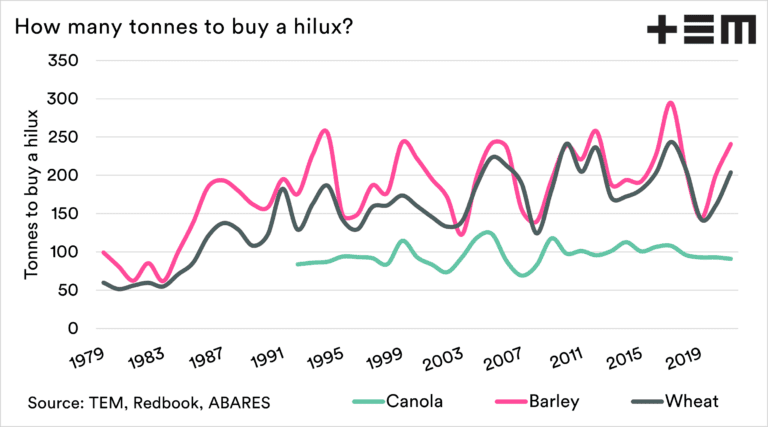
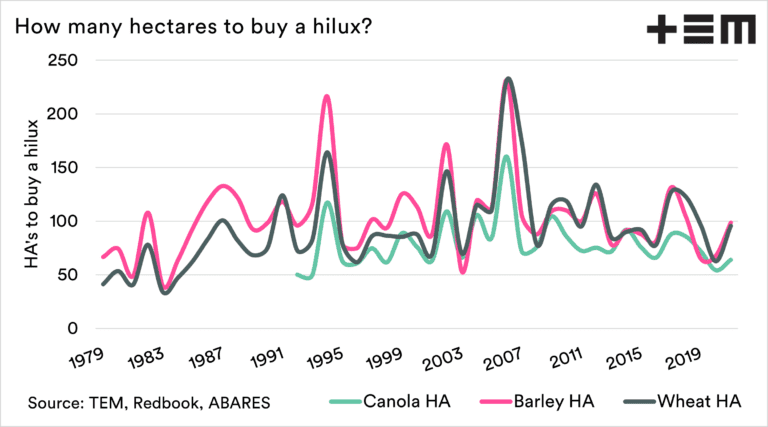
This article was originally published on the Thomas Elder Markets website: https://www.thomaseldermarkets.com.au/
To view original article click here

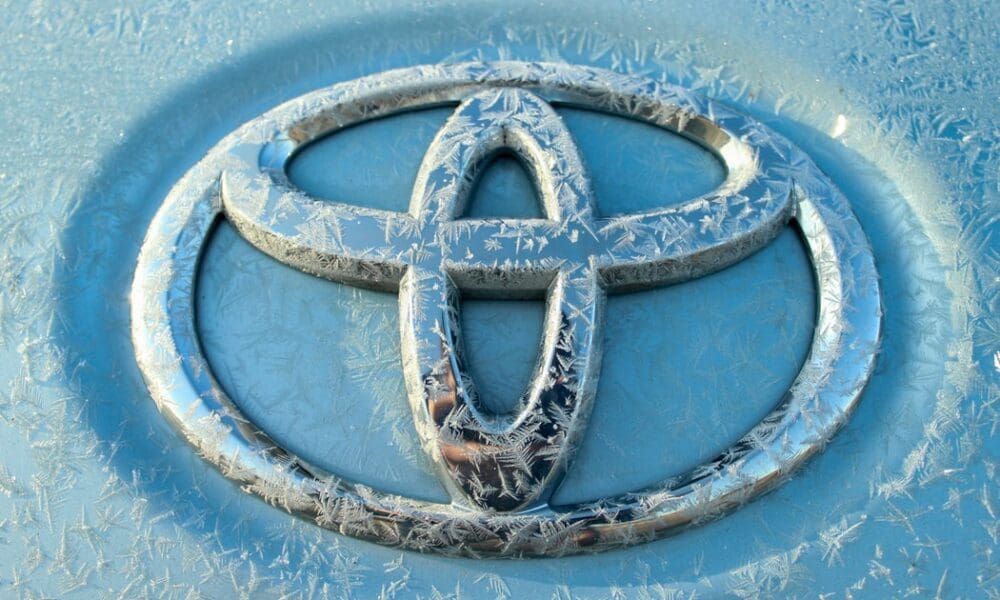
How much of the drop in relative value, grain vs ute, can be attributed to the drop of import tariffs and the opening up of the auto industry…?
True. But the Hilux is now improved. Toyota are getting a return for their R&D. Why don’t you benchmark it against a 1979 equivalent product from India or Russia. Sadly, grain is still grain. If you want a positive to benchmark , why don’t you look at the costs of communication. I can remember when a “trunk call” could cost as much as filling the hilux with fuel ! You can lament about declining terms of trade all you like. Things change and there will always be someone somewhere doing things for not much. Either toughen up or quit.
It’s just a bit of fun………